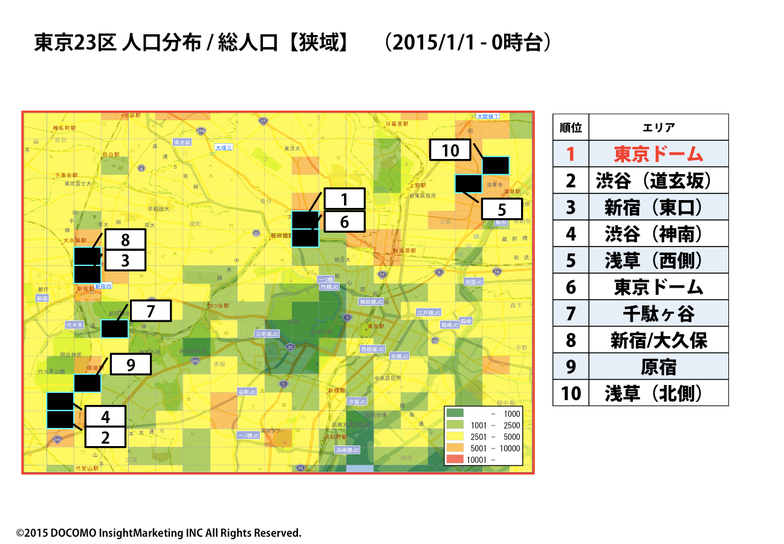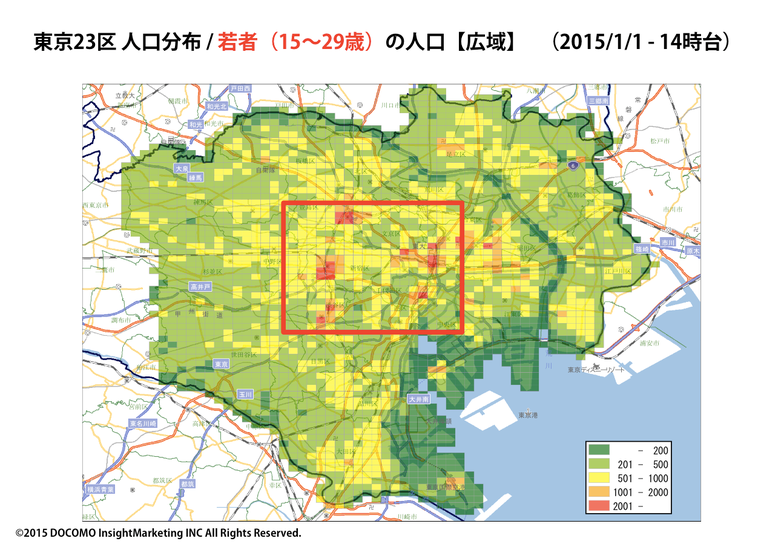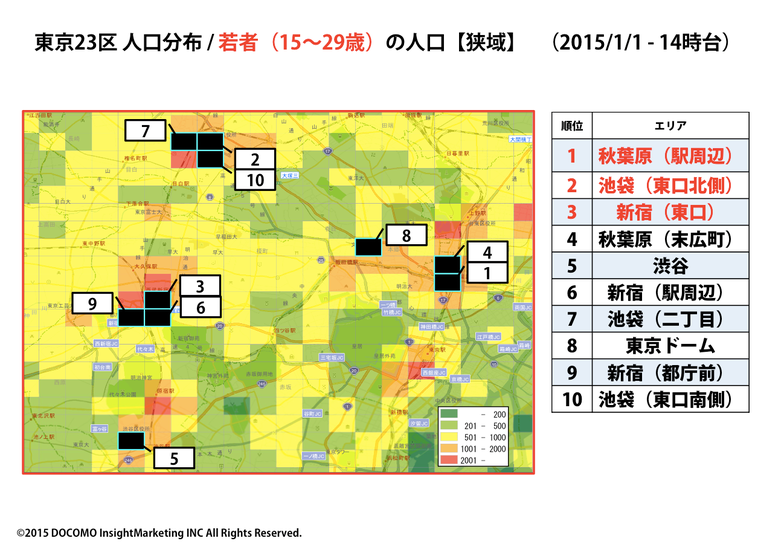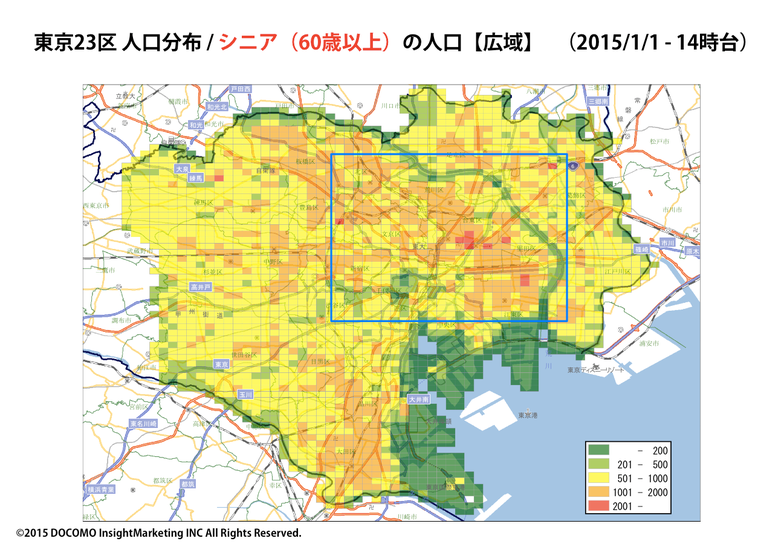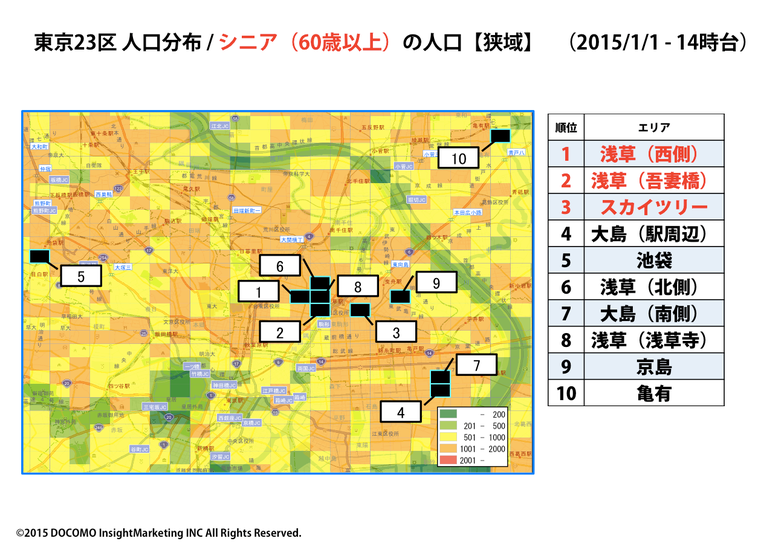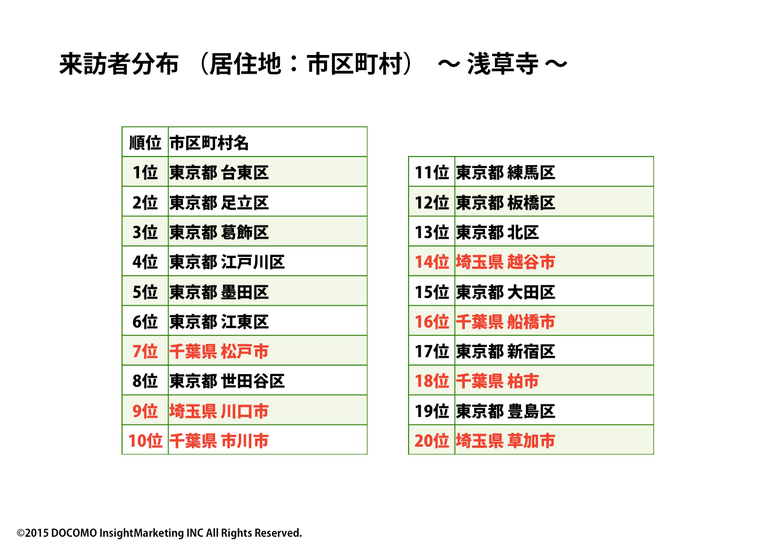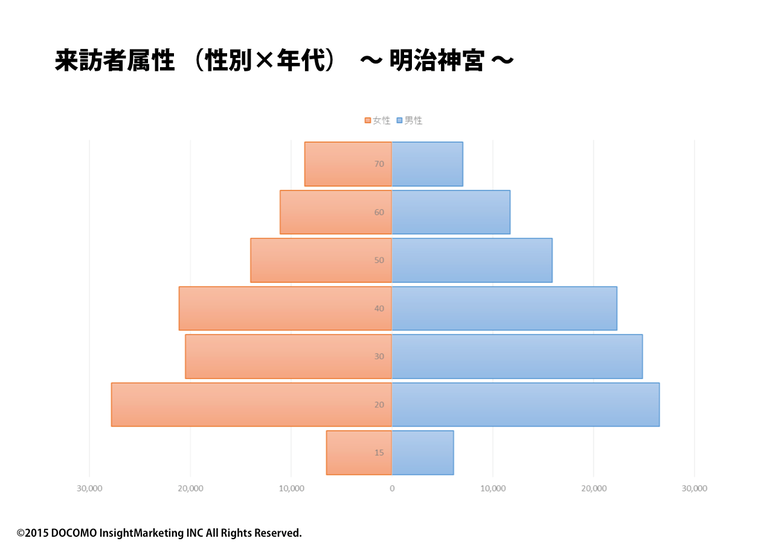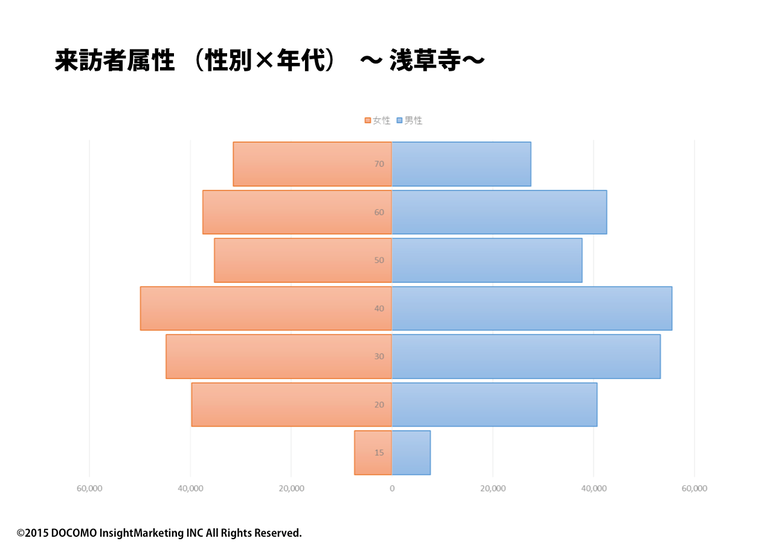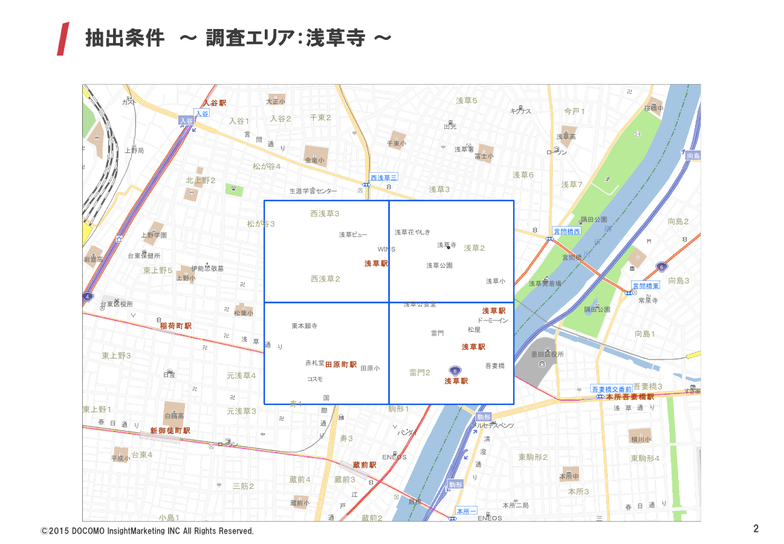This time, we analyzed year-end and New Year travel patterns based on location data analysis.
Every year, news reports say things like "Shinkansen occupancy rate: X%!" or "Tomei Expressway congestion: X kilometers!" But don't you wonder how many people are actually returning home for the holidays, and where they're going? I've personally been curious about this, especially since I once struggled quite a bit while working on communication strategies targeting holiday travelers during Obon.
So this time, I'd like to investigate the actual New Year's homecoming patterns and human movement using Mobile Spatial Statistics (※1).
On New Year's Day, a massive migration of about 13 million people occurs across the Japanese archipelago.
Based on mobile spatial statistics, we calculated the percentage of people whose prefecture of residence differed from the prefecture they were in on January 1, 2015. This figure reached about 10% of the entire Japanese population. In terms of actual people, that's a staggering 13 million. While not everyone is necessarily returning home, considering typical Japanese customs, it's reasonable to assume around 10 million people are making the journey. New Year's is probably the only time this many Japanese people move around.
So, where exactly are they moving? Let's examine the movement patterns in Japan's three major metropolitan areas: Tokyo, Osaka, and Aichi.
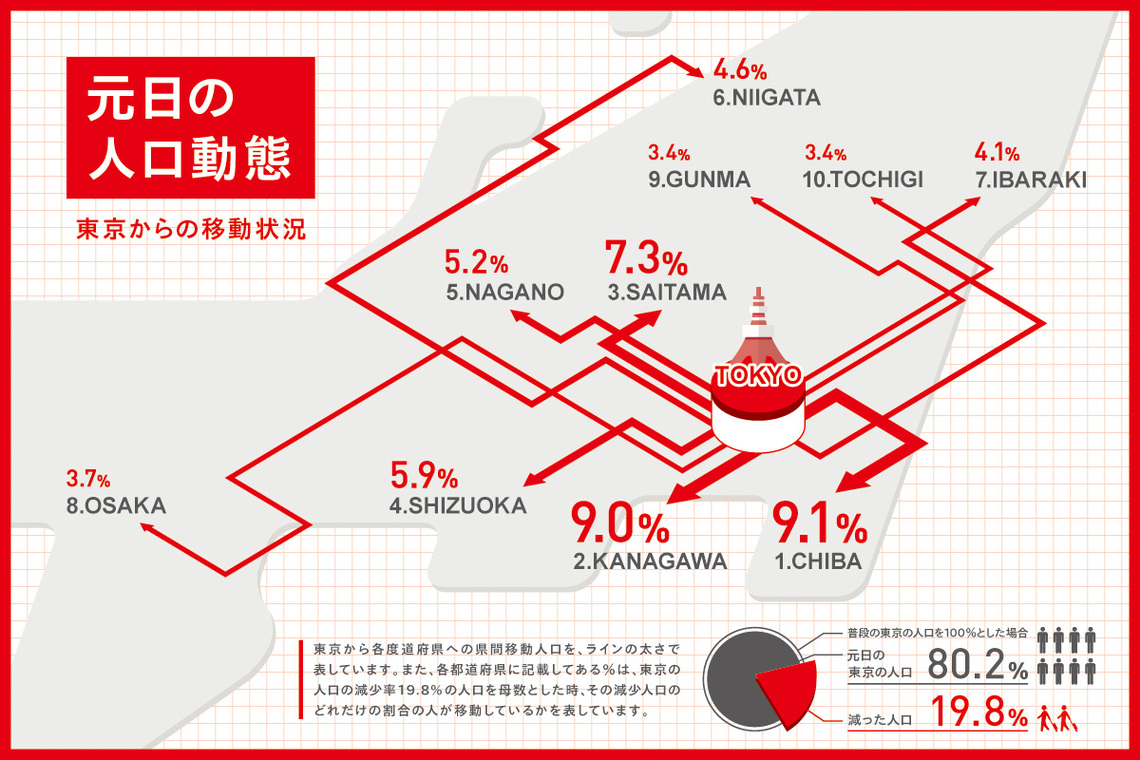

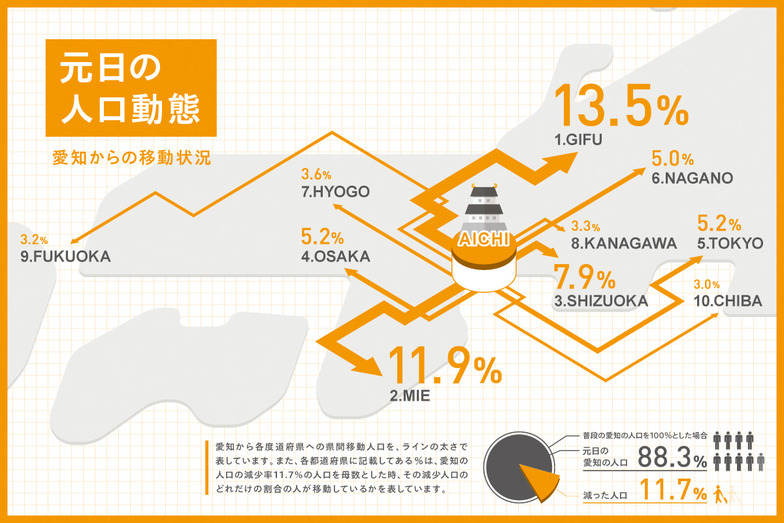
The chart shows the top 10 travel destinations for residents of Tokyo, Osaka, and Aichi Prefecture. From Tokyo, many people travel to neighboring Chiba, Kanagawa, and Saitama. Next are Shizuoka in the Chubu region and Nagano and Niigata in the Shinetsu region. Nagano and Niigata have good Shinkansen connections from Tokyo, so they might feel psychologically closer.
Looking at Osaka, destinations within the Kansai region dominate the top spots. Osaka seems to be a place concentrated with people originally from the Kansai area. For Aichi, it's predictable that many move to neighboring prefectures like Gifu, Mie, and Shizuoka. However, the next most common destinations are Tokyo and Osaka. Aichi is located right at the midpoint of the Shinkansen line, so both Tokyo and Osaka likely feel psychologically close.
Next, let's examine population changes by prefecture based on location data from 0:00 on January 1, 2015.
Prefectures with increased populations on New Year's Day: Nagano, Niigata, Shizuoka.
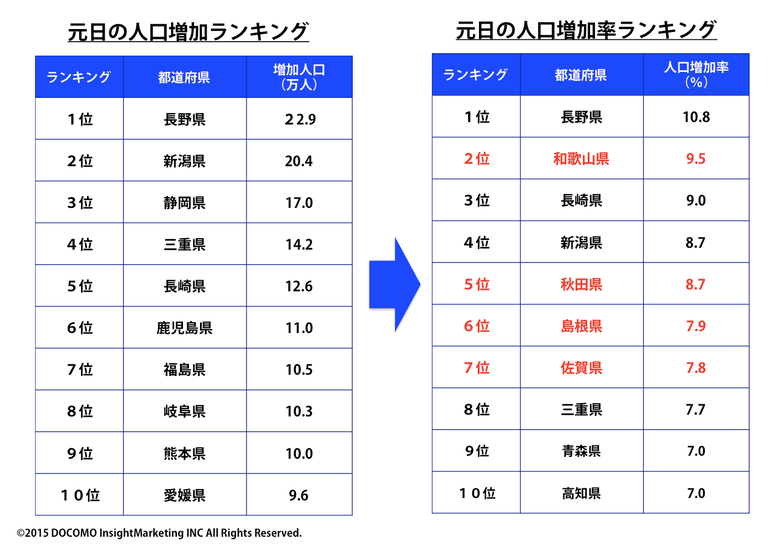
The left table in the figure above ranks prefectures by the percentage increase in population on New Year's Day compared to their usual population. The right table ranks prefectures by the percentage of that increase relative to their total population (※2).
Looking at the left table, we see Nagano, Niigata, and Shizuoka likely had high inbound migration and many returning residents. Nagano, with its ski resorts and vacation homes, may also have seen significant tourist numbers. When converting population growth into impact per prefecture (as shown in the right table), Wakayama, Akita, Shimane, and Saga newly enter the rankings. Nagano Prefecture shows a remarkable figure: its population increased by approximately 11% of its total residents.
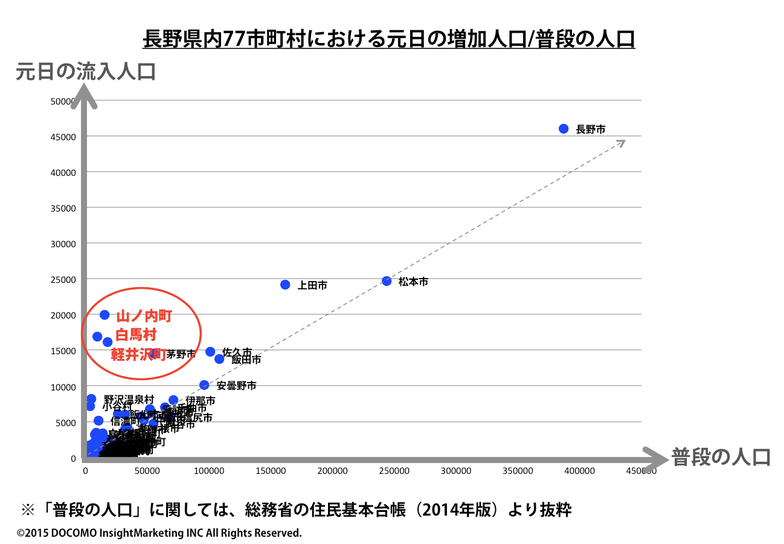
Focusing on Nagano Prefecture, the graph above shows where the largest inflows occur among its 77 municipalities. As expected, Nagano City, Matsumoto City, and Ueda City—already densely populated—rank high due to their large returning resident populations. Conversely, areas like Hakuba and Karuizawa, established as ski resorts and tourist destinations, likely attract many visitors for tourism.
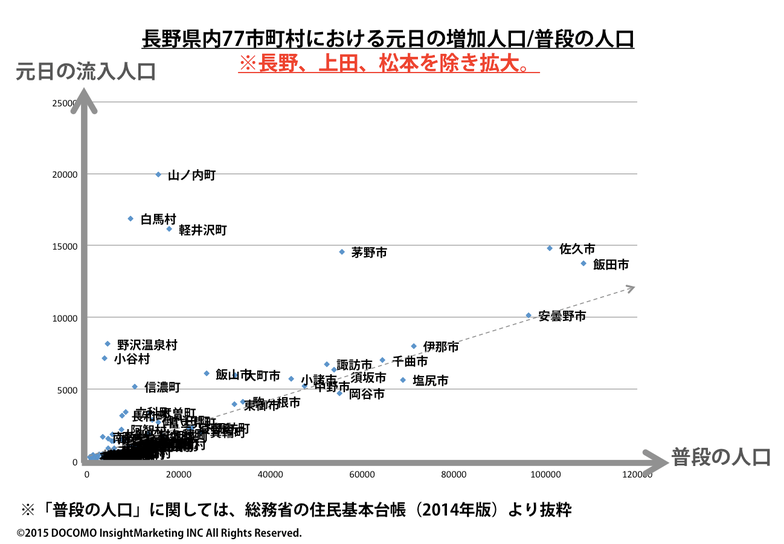
Excluding Nagano City, Ueda City, and Matsumoto City, zooming in on the graph reveals the image above. It shows that Chino City, Saku City, and Iida City also have significant inbound populations. Examining this in greater detail allows us to rank which municipalities in Nagano Prefecture have the highest inbound populations.
Now, let's look at the "New Year's Day population growth rate" figure from a slightly different perspective.
While many New Year's travelers are likely returning home, a high number of returnees implies fewer people residing locally. Thus, "prefectures with many returning residents" can also be interpreted as "prefectures experiencing significant population outflow." Reviewing population statistics released by the Ministry of Internal Affairs and Communications and individual prefectures, many of the prefectures ranking in the top 10 for this "New Year's Day Population Growth Rate Ranking" had cited population outflow as a key challenge. While this analysis assumes that "the location where people stayed on New Year's Day is their hometown," utilizing location data like Mobile Spatial Statistics allows us to visualize the relationship between population outflow origins and destinations at the municipal level and by gender and age group.
Now, let's shift the focus to Tokyo on New Year's Day.
At the stroke of midnight, Johnny's Countdown draws the largest crowd.
Please look at the map above. This map shows a broad overview of the population around midnight on January 1st, and a zoomed-in view focusing on the areas with the highest concentration of people within that map. It clearly shows the largest crowd gathered at the Tokyo Dome. The Tokyo Dome at the stroke of midnight was hosting the Johnny's Countdown Concert during that time slot. This highlights the strong drawing power of Johnny's. Areas like Shibuya and Shinjuku, hosting various countdown events, and Asakusa, popular for New Year's shrine visits, also demonstrate high crowd-drawing power.
Now, let's look at the afternoon of January 1st (at 2 PM).
We've mapped it separately for young people (ages 15-29) and seniors (60+).
Young people going shopping and seniors visiting shrines.
Looking at the wide-area map, the senior map shows more red and orange areas, highlighting Tokyo's large senior population. Zooming in to see where people are gathering in detail reveals that the places young people and seniors go on New Year's Day are completely different. Many young people head to areas like Akihabara with its electronics district, or Ikebukuro, Shinjuku, and Shibuya with their many department stores. Meanwhile, many seniors go to areas like Asakusa and Oshima with their temples and shrines, and to the Skytree, a major tourist attraction. We can see that the places people want to visit on New Year's Day differ this much depending on their age group.
Finally, let's look at the dynamics of Japan's first shrine visit (hatsumōde) by examining two particularly popular temples in Tokyo: Meiji Jingu and Sensoji Temple.
Meiji Jingu attracts urban youth, while Sensoji draws visitors from other prefectures and middle-aged people.
Please see the table above. This shows a ranking of where the visitors to each shrine and temple come from (*3). The red text indicates prefectures outside Tokyo. Sensoji Temple attracts more visitors from other prefectures, with Chiba and Saitama ranking high. Compared to Meiji Jingu, Sensoji Temple has a higher proportion of visitors coming from outside Tokyo.
Next, let's examine the gender and age demographics of visitors to each shrine/temple.
Meiji Shrine's peak age group is the 20s, while Sensoji Temple's peak age group is the 40s. While Sensoji Temple also attracts many visitors aged 40 and above, Meiji Shrine shows a pyramid-shaped distribution with fewer older generations. This reveals that the demographic each shrine or temple attracts is completely different.
That concludes this analysis. What do you think? I believe the data has clearly revealed the unique movement of people on New Year's Day, centered around Tokyo.
We plan to continue sharing various insights under the theme of what location data reveals.
※1 Mobile Spatial Statistics are statistical population data estimated 24 hours a day, 365 days a year, by gender, age group, and residential area, using NTT DOCOMO's mobile phone network infrastructure.
※2 The baseline population was calculated using the monthly average population during the 4 a.m. hour in November.
※3 The survey area is defined below, and the total population for each time slot from 0:00 to 18:00 on January 1st serves as the base figure.








